#pictish warrior
Explore tagged Tumblr posts
Text





Pictish Symbol Stones, Perth Museum, Scotland
#pict#picts#Pictish art#Pictish symbols#archaeology#stonework#design#ancient living#pictish warrior#ancient cultures#Scotland#Perth
51 notes
·
View notes
Text


WHAT WAS PROPOSED VERSUS WHAT WE GOT: '80s SWORD & SORCERY EDITION.
PIC(S) INFO: Spotlight on concept art for a Pictish scout and/or warrior, artwork by the late, great Ron Cobb for the "Conan the Barbarian" (1982) live-action adaption, plus actor Franco Columbo in a somewhat less than impressive "Pictish" final product.
As much as I still enjoy the '82 "Conan" film, for better or worse, it's stuff like this live-action Pictish character that I find lacking and cornball to no end. The dude looks like he's rocking an afro, too (FFS!), what's up with that?! Lastly, he doesn't look nearly savage or wild enough, either, and I find the finished product utterly riduculous-looking to this day. There, I said it.
Source: https://roncobb.net/09-Conan.html.
#Ron Cobb Art#Conan the Barbarian 1982#Conan the Barbarian 1982 Movie#Conan the Barbarian#Pre-production Art#Pictish Warrior#Pictish#Hyborian Age#Conan the Barbarian Movie 1982#Pictish Scout#Concept Art#Picts#1980s#Hyborian#Sword & Sorcery#Sword and Sorcery#Action/Adventure#80s Movies#1982#80s#Action Adventure#Illustration#80s Cinema#Ron Cobb#Conan the Barbarian Film#Conan the Barbarian Movie#Art Direction
9 notes
·
View notes
Text
senua went through so much in Hellblade im so excited for what comes next
#that game was so scary tho fr i coudlnt play it mysel#i had to watch playthroughs. multiple#bc the story is so so so good i had to watch it over and over#her dad was awful#her husband was wonderful#i loved the exploration of the pictish vs viking warriors and beliefs and cultural clashes#a deep dive into her grief and mental illness and trauma
0 notes
Text
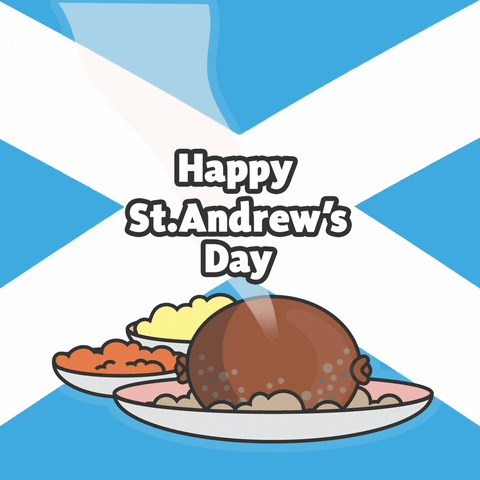


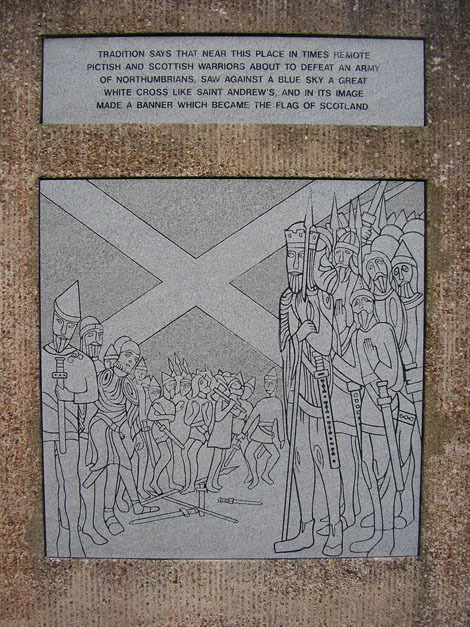
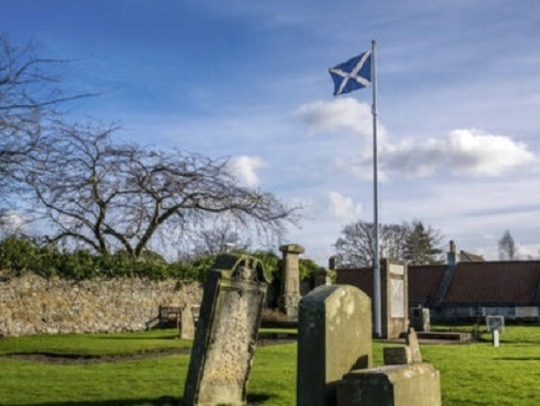
Happy St Andrews Day.
As part of our Patron Saint’s Feast Day the Scottish Saltire is proudly flown and many people add it to their posts on social media to celebrate the day, but how did Scotland adopt the saltire?
There is no actual date, or in fact nothing in our written history of the time, but legend has it that in AD 832 the king of the Picts, ‘Aengus MacFergus’, ( Anglified to Angus but some stories say Hungus) with the support of ‘Scots’ from Dalriada, won a great battle against King Athelstane of the Northumbrians. The site of the legendary battle became known as Athelstaneford in present-day East Lothian.
St Andrew visited the Pictish leader in a dream before the battle and told him that victory would be won. When the battle itself was raging, a miraculous vision of the St Andrew’s Cross was seen shining in the sky, giving a boost to the morale and fighting spirit of his warriors. The result was a victory over the Saxons, and the death of Athelstan. Thus, after this victory, according to the tradition, the Saltire or St Andrew’s Cross became the flag of Scotland, and St Andrew the national patron saint.
While there is no written reference to the battle in Scotland from the period it was said to have taken place, this is not surprising, as it was a time for which we have little or no documentation for anything. The earliest written mention of the Battle of Athelstaneford in Scottish history comes from years later in the newspapers of the day, if you follow my posts then you know I dip into these “Chronicles from time to time, the first one to mention Athelstaneford is the Scotichronicon, written by the Scottish historian Walter Bower.
The Scotichronicon has been described by some Scottish historians as a valuable source of historical information, especially for the times that were recent to him or within his own memory. But he also wrote about earlier times, and this included the battle at Athelstaneford.
Bower’s account includes the scene where Aengus MacFergus is visited by St Andrew in a dream before the battle. He was told that the cross of Christ would be carried before him by an angel, there was no mention of a St Andrew’s Cross in the sky in this version. It was in later accounts, from the 16th centuries onwards, that we have the description of an image of St Andrew’s Cross shining in the sky.
Bower was writing in the early 1400s. The bitter and bloody struggle to retain Scotland’s independence was not just a recent memory but also a current reality for him. Parts of Scotland were still occupied by England, and Bower had been involved in raising the money to release Scotland’s king, James I, from English captivity.
Also, Scotland’s early historical records and documents had been deliberately destroyed during the invasion by the English king Edward I. This was done in part as an attempt to remove historical evidence that Scotland had been an independent kingdom. The idea was simple: take away a nation’s history and you strip it of its identity and justification for its independent existence. The theft of the Stone of Destiny was part of this process, the Black Rood which was believed to contain a piece of the Cross Jesus was crucified on was also removed, I have covered both these in previous posts.
Part of Bower’s motivation in writing his Scotichronicon was to help restore this stolen history. He was a scholar and a man of the church. In his time, the figure of St Andrew had become a prominent presence in Scottish society.
The greatest church building in the land during his time was the Cathedral of St Andrew, which housed relics of St Andrew himself. It had taken over a hundred years to build and wasn’t formally consecrated until 1318, just four years after Bannockburn. The ceremony of course included Robert the Bruce and at it thanks was given to St Andrew for Scotland’s victory.
Less than 100 years after this, in 1413, the University of St Andrews was established and Walter Bower was one of its first students. By this time, the Cathedral of St Andrew was a place of pilgrimage, with thousands travelling there to venerate the saint’s relics. A pilgrimage route from the south took in the shrine of Our Lady at Whitekirk, not far from the site of the battle, and many pilgrims took a ferry across the Firth from North Berwick, where the ruins and remains of the old St Andrew’s Kirk can still be seen close to the Scottish Seabird Centre.
So as he sat down to write his history of earlier times, he was able to trace this connection to St Andrew, using the limited earlier written accounts, such as those of earlier Chronicler I’ve mentioned before, John Fordun, who lived in the 1300s. While Fordun doesn’t specifically mention the location of Athelstaneford, he records a battle which took place between the Picts led by Aengus and a force from the south led by Athelstan, and said the location of the battle was about two miles from Haddington. The account of St Andrew appearing in a dream to Aengus is also described by Fordun.
This creates a powerful link to the development of the written version of the story. Let’s remember Bower came from what is now East Lothian. Let us also remember that people in the early centuries stored and passed on much of their historical knowledge not in the written word but in memory and handed down oral traditions. People told stories, remembered them and told them to the next generation. Undeniably, some details would be forgotten or changed over time, but the bones of the story would be handed down. And that would include reference to locations of significant events in the local landscape.
Bower will have had access to this rich oral tradition of local stories based on handed-down collective memories of past events, which is perhaps why he was able to name the location. The later writers who added to the story of the battle will likewise have found new sources in the oral tradition to add to the narrative. Even in the 19th century, cartographers mapping the area were able to identify locations traditionally associated with the battle from local people who were custodians of ancestral memory.
This is how the story of the Battle of Athelstaneford and its connection with St Andrew and the Saltire has evolved.
The village is home to the National Flag Heritage Centre which occupies a lectern doocot built in 1583 and rebuilt in 1996. It is at the back of the village church. Today the village is surrounded by farmland and has little in the way of amenities. Tourists can follow the “Saltire Trail”, a road route which passes by various local landmarks and places of historical interest.
Athelstaneford Parish Kirk has a connection with the subject of my post last week, author Nigel Tranter, who was a prominent supporter of the Scottish Flag Trust. He married in the church, and in April 2008 a permanent exhibition of his memorabilia was mounted in the north transept of the church. Items include a copy of Nigel Tranter’s old typewriter, a collection of manuscripts and books, and other personal items. The display was previously at Lennoxlove House, and prior to that at Abbotsford House, the home of Sir Walter Scott.
45 notes
·
View notes
Text


Iron Sword from Perth, Scotland dated between 800 - 1000 on display at the Perth Museum in Perth, Scotland
Surviving in three pieces, this sword was found during demolition works on Watergate, Perth in 1848. Although dating is difficult due to it's condition, it may have been connected to Viking raiding, either used by Viking raiders or by Pictish and Scottish defenders. Due to the quality of Viking and Frankish swords, they were often used by warriors in Scotland instead of the Gaelic styles.
Photographs taken by myself 2024
#sword#art#archaeology#viking#scotland#scottish#military history#medieval#perth museum#perth#barbucomedie
57 notes
·
View notes
Text
The history of the Arc family in Arthurian mythos!
ever wonder about jaune's family before his sisters and him? ever wonder how our favorite noodle would do in Arthurain times? well good news for you I'll be going through the actions of both his great Grand father and grand father leading up to Jaune being knighted during the time of uther penndragon! lets get started Johnathan Arc was born in 410 A.D the last year that Rome was a part of Brittain, he was knighted at the Age of 21 in 431 A.D. Earning himself 1000 glory
in 439 A.D he took part in the battle of Carlion earning 90 glory and a Hatred for the Irish (the Damned bastards don't fight fair!) it's a 16! out of a max of twenty meaning that it's an intense hatred for the Irish. in 440 the king Constantine is murdered by Silchester knights who were supposed to be guarding him, but great grandpa arc didn't know this because he was on garison duty earning him a whopping 10 glory
in 441 through 442 At the urging of Duke Vortigern of the Gewessi, the High Council chooses Constans, the young son of Constantin, as king. Constans is a young, bookish type, however, so he relies on his uncle, Duke Vortigern, for advice. John however was busy fighting for his life against the same pictish raiders he'd been fighting last year, he did manage to survive though earning him a 20 more glory.
in 443 Young King Constans is murdered by his Pictish bodyguards. After much debate, Duke Vortigern is selected to be the next King of the Britons. The younger brothers of King Constans are taken away to Brittany in secret. Also this year, a prelate from the pope, the saintly Germanus, comes to Britain to condemn and combat British Christianity. Great Grandpa Arc resisted and argued openly for the continuation of the Brittish church. having been called back to the kingdom proper though he was put on the young Constans' guard he was unable to protect the boy but managed to survive gaining a great hatred for the picts (only a fool would trust a pict!) of 12
in 444 through 445 The Picts stage a massive invasion, with their armies occupying much of the north and bands of raiders penetrating all the way into Logres. Rather than risk a great loss, King Vortigern orders his armies to dig in and garrison their homes and holdings.
John defended his manor well and won a further 10 glory
in 446
King Vortigern realizes that he needs assistance against the furious Picts and, in good Roman fashion, hires new barbarians to fight the old barbarians. The Saxon kings Hengest and Horsa come from the Continent with their bands of warriors to join Vortigern’s army. Thus reinforced, the Briton army marches north against the Picts. Battle is met near the city of Lincoln, and it is a great victory for the British. Great Grandpa Arc fights in the battle of Lincoln and while he survived he drew on his Hatred of the picts to do so his hate grew as a result of the slaughter going from an above average 12 to an all consuming 21 out of 20! (they were like animals and I slaughtered them like animals, not just the warriors, but the women and children too! I hate them! I HATE THEM!) in 447-449
During this time, King Vortigern spares his own army, using the Saxons to drive the Picts out of the north. More Saxons come to Britain, including many families, and Hengest’s daughter Rowena becomes a favorite at Vortigern’s court. News from the Continent is persistent in saying that new foes, the Huns, are defeating the German tribes right and left. These savages are thought to be half demon, half horse.
John complains about the increased amount of foreigners not trusting anyone not of good brittish blood. he's known as a dissident but nothing of note occurs for him this year.
in 450 A.D
Vortigern, impressed with the battle prowess of the Saxons and even more with the talents of Rowena, the daughter of the Saxon chief Hengest, marries her this year in a lavish celebration. Hengest receives the Cantiacii civitas as her bride price and renames it Kent. Many voice concern that King Vortigern is favoring these newcomers more than local loyal native Britons. Johnathan notices the Daughter of the saxion Cheif is pregnant when he attends the wedding, he lets the other dissidents know of this fact. earning him 50 glory. he became almost outright rebellious in the face of what he saw as a betrayal of the Brittish people in 451
News from the continent indicates that the Huns, led by their king, Attila, reached the walls of Rome itself but were unable to storm or besiege it. Some say the Huns were stopped because they lacked siege engines, others that they failed because of the pope’s piety. After failing to smash or bluff Rome into submission, the Hun army turns to Gaul for pillage and plunder, scouring the land of its wealth, slaughtering as it goes. The commander in Gaul, Aetius, calls for help from all who will send it, and Vortigern sends a small contingent. The allied army meets the Huns at Chalons, where the Huns are defeated and driven from Europe. Cedric is born to Vortigern and Rowena and Johnathan is sent to assist Aetius managing to return alive he is met by his king speaking honied words but with a bitter heart.
Years 452–454 Northern Irish under Fearghus begin colonizing Dal Riada. Vortigern sends raids into Irish lands. nothing much happened for Great Grandpa Arc
Years 455–456 News arrives that Rome, the center of the civilized world, has been sacked! The tribe of Germans called the Vandals has done the impossible and brought Rome low. The Western Empire is finished. Vortigern moves Cornovii warriors to Dumnonia, and Votadini to Cambria, where they expel the Irish. Vortigern is persuaded to settle Saxons under Hengest’s sons Octa and Eossa in former Parisi lands, founding Nohaut and Deira. Shiploads of Continental Saxons flock to the new theods. the dissidents realize that they must act now or perish along with their people.
Year 457 High King Vortigern summons his army, drawing from western tribes, with the Saxons, and marches against the rebels. A great battle ensues at Crecganford in Kent, in which the rebels are crushed. Vortigern forgives his son, Vortimer, but assumes the regency of Powys since Katigern's son, Cadell, is too young to rule. Vortigern gives the rest of the Cantii tribe’s lands to his loyal Saxons. As a tribe, the Cantii are finished. Johnathan was in the battle of Kent fighting against Vortigern he managed to slay a bodyguard of the king but was eventually pushed back earning 100 glory and a hatred for the traitor king. at 18 out of a possible 20 it too nestles deep in his heart.
Years 458–459 Many dissident Britons depart from the island, moving with their families and possessions to Brittany. Jaune's grandfather, loyal to the Earl of Salisbury, remains.
nothing of interest happens in 460 but in
461 and 462 The rule of King Vortigern has proved unwise and very oppressive, often favoring his Saxon mercenaries (and in-laws) over his lawful subjects. Many nobles have talked of rebellion, and when Vortigern’s eldest son (by his first marriage) agrees to lead the nobles, general rebellion breaks loose. The Earl of Salisbury is among the rebels to fight in the Battle of Cambridge. Johnathan Arc loyal to the end and with a deep hatred for all who were not of his people fought and survived. he gained further glory (10)but he was aging, at the advice of his son he tried to see the humanity in the saxions and when in 463 an invitation was sent out for peace talks at Stonehenge he attended.
Year 463 Ostensibly to bring peace to all sides, Vortigern and Hengest call a council of all combatants to meet at Stonehenge for a feast of peace. Seeking reconciliation, almost all British knights attend. The Saxons prove their worth through great treachery, though, and the majority of the nobles of Britain are slain in the “Night of Long Knives.” In the subsequent confusion, a large part of their armies are dispersed or slain. The Earl of Salisbury is among the dead.
his family would inherit not only his hatred for the Irish ,the Picts and the traitor king but an all-consuming hatred of 27 out of 20 for the Saxons. he left behind a newly knighted son and a manor in Pitton. a family known to be naturally loveable and a Magic Saddle granting his family +4 to horsemanship. his final glory was 1200 he made some waves but in the end he failed to die gloriously so he didn't make as much of a difference as some others did on the kingdom. in 464 Nickolous Arc Married a daughter of the Earl of Salsbury earning him 350 glory, he is later knighted this year earning him 1000 glory and inheriting one tenth of his father's glory (120) for a total of 1550 to start his career. Jaune's father is born this year. if looking at the history of the Arc family one thing should stand out about their foundations. they are a family of intense passions whether love or hate it is these deep passions that lead to almost all the actions of the Primarch of the family. passions that were inherited. their family trait of naturally lovable combined with a deep hatred of all outside of the Cyrimic world and culture paints the picture of a people who loved their own, and fought valiantly for those they cared about but were deeply distrustful of those outside it. @weatherman667 @howlingday @heliosthegriffin @thatorigamiguy
thoughts on Great grandpa arc? what about the Arc family? for the recorded I rolled on a table for all of these years though I based what happened off of Arthurian mythos.
47 notes
·
View notes
Text







The Savage Sword of Conan the Barbarian #30 -June 1978-
The Brunner Bran Mak Morn: a portfolio of Robert E. Howard's pictish warrior-king by Frank Brunner, ESQ.
art by Frank Brunner
19 notes
·
View notes
Photo
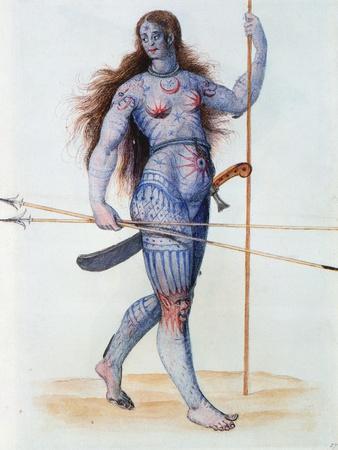
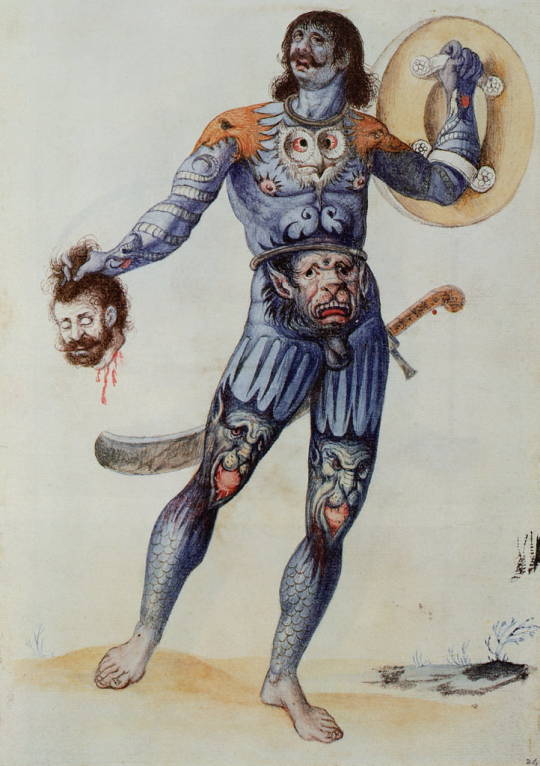
1) A Pictish woman; nude with stained and painted body, curved sword and spears. Pen and brown ink and watercolour over graphite, touched with white (discoloured). 1585-1593. John White.
2) A Pictish warrior holding a human head; nude, body stained and painted with birds, animals and serpents carrying shield and man's head, with large curved sword. Watercolour touched with bodycolour and white over graphite.1585-1593. John White.
#john white#pictish#picts#scotland#16th century art#english art#scottish art#drawing#early modern art
103 notes
·
View notes
Text

Depictions of Pictish Warriors, National Museums Scotland, Edinburgh
#pict#pictish#pictish art#pictish design#pictish warrior#archaeology#ancient crafts#ancient cross#ancient living#ancient cultures#stonework#stone carving#Scotland#Edinburgh
28 notes
·
View notes
Text
The Picts. The Picts were an ancient group of people who inhabited the eastern and northern parts of Scotland during the late Iron Age. The etymology of their name, "Pict," is believed to come from the Latin word "Picti," meaning "painted or tattooed people," a reflection of their distinctive body art.
One of the most fascinating aspects of the Picts was their matrilineal heritage system. Unlike many other ancient societies that traced descent and lineage through the male line, the Picts emphasized matrilineal descent. This means that genealogical importance was given to the mother's line rather than the father's. Such matrilinear practices challenge our conventional understanding of hereditary systems in ancient times, emphasizing the unique cultural elements of the Picts.
The Picts are often famously associated with tattoos and body paint, particularly the color blue. Ancient writers, like the Roman historian Julius Caesar, wrote about the blue designs that adorned the bodies of these tribes, linking them with the use of woad, a plant from which a blue dye can be extracted. The Picts would create intricate designs, which were possibly symbols of their warrior status, clan affiliations, or religious beliefs.
During their conquest of Britain, the Romans faced resistance from tribes like the Picts. Their opposition wasn't just direct; they employed guerrilla tactics, leveraging the highland terrains. The Antonine Wall, akin to Hadrian's Wall, marked the Roman Empire's boundary and defended against the Picts. Though Romans tried to conquer the Picts, they never succeeded.
It should be noted, however, that much about the Picts remains shrouded in mystery. The Pictish stones provide some of the most direct evidence of Pictish culture and art, but their exact meanings and purposes are still debated among scholars. Despite the limited direct records from the Picts themselves, their influence on the shaping of Scotland's early history is undeniable.
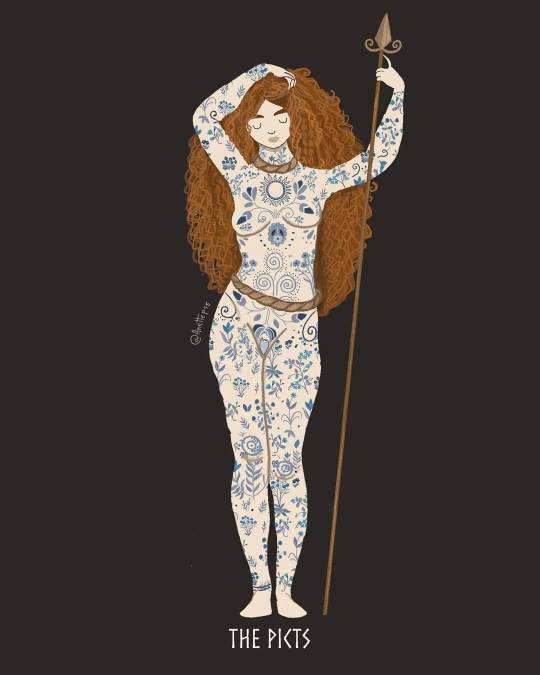
18 notes
·
View notes
Photo


I’ve been doing commissions! This one features a pictish warrior heroically looking across the fields of old timey Scotland. I particularly like the big cloud over her, and naturally, my heart softens when I see a big woman in armor. You can get your own commission by looking at the info here: https://thelenart0.wixsite.com/thelensart/commissions
35 notes
·
View notes
Text
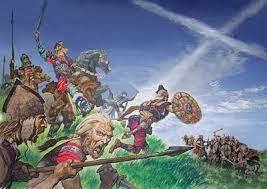

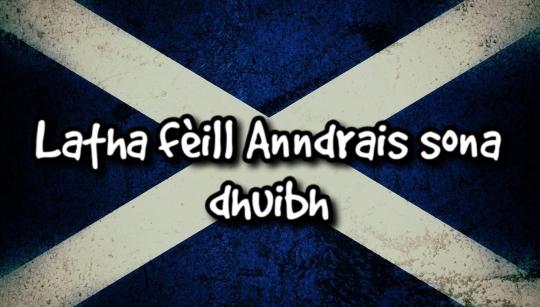
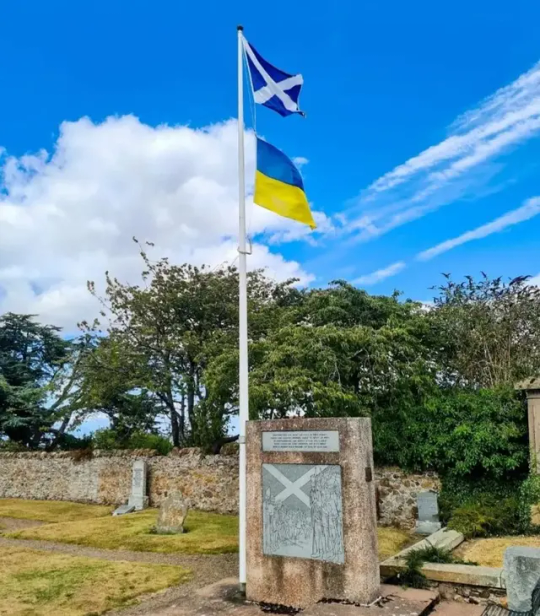


Happy St Andrews Day.
As part of our Patron Saint’s Feast Day the Scottish Saltire is proudly flown and many people add it to their posts on social media to celebrate the day, but how did Scotland adopt the saltire?
There is no actual date, or in fact nothing in our written history of the time, but legend has it that in AD 832 the king of the Picts, ‘Aengus MacFergus’, ( Anglified to Angus but some stories say Hungus) with the support of 'Scots’ from Dalriada, won a great battle against King Athelstane of the Northumbrians. The site of the legendary battle became known as Athelstaneford in present-day East Lothian.
St Andrew visited the Pictish leader in a dream before the battle and told him that victory would be won. When the battle itself was raging, a miraculous vision of the St Andrew’s Cross was seen shining in the sky, giving a boost to the morale and fighting spirit of his warriors. The result was a victory over the Saxons, and the death of Athelstan. Thus, after this victory, according to the tradition, the Saltire or St Andrew’s Cross became the flag of Scotland, and St Andrew the national patron saint.
While there is no written reference to the battle in Scotland from the period it was said to have taken place, this is not surprising, as it was a time for which we have little or no documentation for anything. The earliest written mention of the Battle of Athelstaneford in Scottish history comes from years later in the newspapers of the day, if you follow my posts then you know I dip into these “Chronicles from time to time, the first one to mention Athelstaneford is the Scotichronicon, written by the Scottish historian Walter Bower.
The Scotichronicon has been described by some Scottish historians as a valuable source of historical information, especially for the times that were recent to him or within his own memory. But he also wrote about earlier times, and this included the battle at Athelstaneford.
Bower’s account includes the scene where Aengus MacFergus is visited by St Andrew in a dream before the battle. He was told that the cross of Christ would be carried before him by an angel, there was no mention of a St Andrew’s Cross in the sky in this version. It was in later accounts, from the 16th centuries onwards, that we have the description of an image of St Andrew’s Cross shining in the sky
Bower was writing in the early 1400s. The bitter and bloody struggle to retain Scotland’s independence was not just a recent memory but also a current reality for him. Parts of Scotland were still occupied by England, and Bower had been involved in raising the money to release Scotland’s king, James I, from English captivity.
Also, Scotland’s early historical records and documents had been deliberately destroyed during the invasion by the English king Edward I. This was done in part as an attempt to remove historical evidence that Scotland had been an independent kingdom. The idea was simple: take away a nation’s history and you strip it of its identity and justification for its independent existence. The theft of the Stone of Destiny was part of this process, the Black Rood which was believed to contain a piece of the Cross Jesus was crucified on was also removed, I have covered both these in previous posts.
Part of Bower’s motivation in writing his Scotichronicon was to help restore this stolen history. He was a scholar and a man of the church. In his time, the figure of St Andrew had become a prominent presence in Scottish society.
The greatest church building in the land during his time was the Cathedral of St Andrew, which housed relics of St Andrew himself. It had taken over a hundred years to build and wasn’t formally consecrated until 1318, just four years after Bannockburn. The ceremony of course included Robert the Bruce and at it thanks was given to St Andrew for Scotland’s victory.
Less than 100 years after this, in 1413, the University of St Andrews was established and Walter Bower was one of its first students. By this time, the Cathedral of St Andrew was a place of pilgrimage, with thousands travelling there to venerate the saint’s relics. A pilgrimage route from the south took in the shrine of Our Lady at Whitekirk, not far from the site of the battle, and many pilgrims took a ferry across the Firth from North Berwick, where the ruins and remains of the old St Andrew’s Kirk can still be seen close to the Scottish Seabird Centre.
So as he sat down to write his history of earlier times, he was able to trace this connection to St Andrew, using the limited earlier written accounts, such as those of earlier Chronicler I’ve mentioned before, John Fordun, who lived in the 1300s. While Fordun doesn’t specifically mention the location of Athelstaneford, he records a battle which took place between the Picts led by Aengus and a force from the south led by Athelstan, and said the location of the battle was about two miles from Haddington. The account of St Andrew appearing in a dream to Aengus is also described by Fordun.
This creates a powerful link to the development of the written version of the story. Let’s remember Bower came from what is now East Lothian. Let us also remember that people in the early centuries stored and passed on much of their historical knowledge not in the written word but in memory and handed down oral traditions. People told stories, remembered them and told them to the next generation. Undeniably, some details would be forgotten or changed over time, but the bones of the story would be handed down. And that would include reference to locations of significant events in the local landscape.
Bower will have had access to this rich oral tradition of local stories based on handed-down collective memories of past events, which is perhaps why he was able to name the location. The later writers who added to the story of the battle will likewise have found new sources in the oral tradition to add to the narrative. Even in the 19th century, cartographers mapping the area were able to identify locations traditionally associated with the battle from local people who were custodians of ancestral memory.
This is how the story of the Battle of Athelstaneford and its connection with St Andrew and the Saltire has evolved.
The village is home to the National Flag Heritage Centre which occupies a lectern doocot built in 1583 and rebuilt in 1996. It is at the back of the village church. Today the village is surrounded by farmland and has little in the way of amenities. Tourists can follow the "Saltire Trail", a road route which passes by various local landmarks and places of historical interest.
Athelstaneford Parish Kirk has a connection with the subject of my post last week, author Nigel Tranter, who was a prominent supporter of the Scottish Flag Trust. He married in the church, and in April 2008 a permanent exhibition of his memorabilia was mounted in the north transept of the church. Items include a copy of Nigel Tranter's old typewriter, a collection of manuscripts and books, and other personal items. The display was previously at Lennoxlove House, and prior to that at Abbotsford House, the home of Sir Walter Scott.
27 notes
·
View notes
Text

Portrait of the Berserker as a Young Man
I've drawn the tattoos on Bruide's chest and arms before (see here), and I fancied designing the ones on his back as well. I suppose it's not really a portrait since you can't see his face, but he's still a berserker - albeit enjoying some downtime here - and a fair bit younger than I've drawn him before. He was in his mid/early fifties when Roan was born, and I'd put him in either his early thirties or the tail-end of his twenties here, after his son (Roan's dad) was born but before he hung up his battle gear to settle down for good.
The three scars all came from the same fight. When he first started out his warrior-adventurer career running with a mercenary band, he decided that he wanted to do the iconic saga thing and go into battle shirtless. The mercenary captain indulged him for one skirmish to let him get it out of his system, that happened, and he invested in a proper hauberk+gambeson combo going forwards.
---
Now comes the part where I ramble at length about history.
So, Bruide and his granddaughter take an obvious inspiration from the Picts. His name is a Gaelic variation of 'Bridei', the name of several Pictish kings, most famously Bridei mac Maelchon -- who met with St Columba, and is one of the first kings we know as more than just a name in a list -- and Bridei mac Beli, who defeated the Northumbrians at the Battle of Dun Nechtain. ('Roan' is not a Pictish name; it's just an anglicisation of ròn, the Gaelic word for 'seal'.) I've also based their tattoos on Pictish designs, sometimes to a pretty specific degree; the wolf on Bruide's back here is drawn from the Ardross Wolf Stone displayed in Inverness Museum, though I've changed the pose to be running rather than walking, and you can find variations of the others on one stone or another.
But: was tattooing a genuine Pictish practice? The romantic Victorian pop-culture view would certainly have you believe so, but the actual historic evidence is inconclusive. We get the name Picti from the Romans -- most likely it means something like 'the painted ones' -- and Roman sources do indeed make reference to designs on the bodies of Caledonian warriors.
Point the first: It's not clear if this is actually referring to tattooing, or to something less permanent like body paint.
Point the second: The people we're usually talking about when we talk about the Picts - the people who lived in north and eastern Scotland, who left the sculptured stones behind - lived a long time after the Romans left. Rome gave up on its Caledonian ambitions and retreated to Hadrian's Wall in 211 with the death of Septimius Severus, and pulled out of Britain altogether in 410; the very oldest Pictish stones are at least a century younger than that, and most are younger still. King Bridei's meeting with St Columba probably happened some time in the 560s or 70s.
Point the third: The writings of Isidore of Seville actually do make pretty specific reference to Pictish tattooing, with needles and all, but he could well have been talking out of his arse; in their book Picts: Scourge of Rome, Rulers of the North, Noble and Evans note that this could have been just because of the name Picti rather than any real evidence. (They point out that he also wrote that wine is good for the blood, not from any medical data but because vinum sounds like vena -- so, yeah, maybe don't take everything he wrote at face value.)
Point the fourth: The carvings of people on Pictish stones often show some quite intricate detailing where it's survived centuries weathering; the three warriors on the Brough of Birsay Stone, for example, have richly-decorated shields and their leader has quite an elaborate hairdo. They don't, however, show any obvious tattoos. Not today, at least; there could be details that have been lost to weathering, and if -- as has been proposed occasionally -- the stones were originally painted, some of those lost details may never have been carved at all.
So all of this is a long-winded way of saying: we don't really know. It's certainly plausible that they did -- symbol carvings have also been found on things like little bone gaming pieces, so they weren't reserved for monumental works like the sculptured stones or high-status pieces like the Whitecleuch Chain; most likely they were also used on textiles and other artefacts that have rotted away during the intervening centuries -- but ultimately it's just not something we can provide a definite answer to with the evidence we have.
Of course, I'm not writing historical fiction here, I'm writing pure secondary-world fantasy with occasional historical inspiration, so I can do what I want. I think they would look cool with tattoos, I give them tattoos. So there. Nyehh.
5 notes
·
View notes
Text
Welsh Arthuriana: The Sons of Caw
A tale of King Arthur in drag, horribly unwise schadenfreude, and this big rock in the town of Ruthin
(This is an amalgamated retelling of several versions of the story from the 11th to the 16th centuries. Historical notes at the end.)

Arthur was king over the Britons in the south, and Caw the giant was king over the Picts in the north. Caw had twenty-three sons, among them the great warrior Hueil and the great writer Gildas.
Arthur, meanwhile, had almost as many lovers as Caw had sons. One day Hueil hit it off with one of Arthur's mistresses, and they snuck off to hook up. Arthur snuck up to spy on the pair, but they noticed him.
They attacked each other, and though it was a fierce fight Hueil won, stabbing Arthur in the knee. With blood spilled, tempers cooled and they all made peace. Arthur was like look, man, let's put this all behind us, I'll be mature, I won't take revenge, on one condition: Never give me shit about this. No "hey remember the time I kicked your ass", no "hey check out this guy walking funny, I wonder what happened to his leg", no nothing, okay?
For a while, there was peace, but Arthur always walked with a slight limp after that. One day he was in Ruthin in Gwynedd, dressed as a woman in order to hit on a bunch of other girls, and oh boy we do not have time to try and unpack that one here. Hueil came by and saw the ladies dancing together, and apparently Arthur passed pretty well, because Hueil only recognised him on account of the slight limp. And he knew, he knew what he had promised, but he just couldn't help himself:
"You'd be dancing all right if it wasn't for the knee!"
And lo, Arthur lost his shit, for lo, Hueil had fucked around, and now he would find out. Arthur dragged him to a big rock in the middle of town and cut his head clean off. And the rock has been called Maen Huail ever since.
When Hueil's brother Gildas heard about this, he was distraught. He took all of the books he had written in praise of Arthur, and threw them into the sea. And from that day forward, not once would the name of Arthur be found in the works of that great scribe.

So, the history
The real Gildas was a monk who probably lived in the 6th century and is our only near-contemporary source for the immediate post-Roman period in Britain. There are multiple traditions about his family, but a connection to Pictish royalty seems unlikely. This story is attempting to explain why, despite writing about the battle of Badon happening within his lifetime--supposedly Arthur's most famous victory--Gildas never mentions Arthur. The real reason is, of course, that Arthur as we know him didn't exist, and was a fictional character probably invented well after Gildas' time.
The earliest versions of the story just mention conflict between Arthur and Hueil/Huail, that usually ends in the death of the latter. Culhwch and Olwen has the person Hueil stabbed be his own nephew, and for whatever reason Arthur took a disliking to this. The idea that this explains the lack of Arthur in Gildas appears in the late 12th century, recorded by Gerald of Wales. All of these firmly locate Caw's family in "Prydyn" (Pictland/Scotland) (not to be confused with "Prydein", Britain as a whole)
Later folklore, collected by Elis Gruffydd circa 1530, localises the entire story to Gwynedd in north Wales, with Caw being a chieftan there, and this version is where the trysts and mistresses and crossdressing come from. I split the difference by keeping the Pictish origin but having Hueil just visit Wales, but I do want to clarify these are different versions in the actual medieval source material.
(Oh, also Caw being a giant might be a misreading over the years of his name as "Gawr", "big", often used as an epithet for Welsh giants)
10 notes
·
View notes
Text



Cross Slab from Benvie, Scotland dated to the 9th Century on display at the McManus Art Gallery and Museum in Dundee, Scotland
This stone can be interpretated to show the connection between the church and nobility. One side the christian cross in the Celtic style and the other side shows a cavalryman with elaborately styled curly hair and a long moustache, very common amongst Celtic peoples. The lower part of the stone shows a helmeted cavalryman, presumably a bodyguard to the noble.
The Pictish peoples were farmers, horse breeders and craftsmen, but most commonly depict themselves as warriors. This may be due to the people commissioning the carvings were often nobles and warriors and so the common people were often ignored in art.
Photographs taken by myself 2024
#art#archaeology#military history#fashion#cavalry#picts#medieval#9th century#mcmanus museum#dundee#barbucomedie
4 notes
·
View notes
Text
OC Name Meanings Tag Game
Thanks for the tag, @aquadestinyswriting :D
Rules: Put down an OC or more and tell what their name means.
Tagging: @wildswrites @aalinaaaaaa @thewriteflame @aquadestinyswriting @artdecosupernova-writing @autumnalwalker @blind-the-winds @eli-writes-sometimes @hannahcbrown @oh-no-another-idea @rhikasa @swordsoulwrites @winglesswriter @andromeda-grace @writingmaidenwarrior

Hi, yes, still thinking about my Starbound blorbos.
Starbound has a pool of name to select the procedurally generated NPCs from. I know that the Human names are very Americanised and the Hylotl names are very Japanised, so I suspect these will have findable meanings. However the Avian, Floran and others may not, so I'll make something up for those 😉️
The name-picker has chosen the below for this game:
Xictli
According to Nahuatl Dictionary, 'xictli' translates to 'navel' or 'umbilical cord', and according to the Embassy of Mexico in Australia, it can also mean 'center'.
So spinning up a headcanon, 'xictli' is the name given to a middle child, who is expected to help hold the family together.
Fife
'Fife' is the name of a place is Scotland, apparently named itself from the pictish legend, Fib, of whom a 15mins search couldn't tell me much about except that he was a chieftain's son and a warrior.
So to the far future humanity, Fife means someone who's strong, brave, and a survivor.
Kata
Kata is a short form of a variant of Katherine. It seems it doesn't have a concrete meaning or etymology; meaning include 'one of two', 'my consecration of your name', 'pure' or 'torture'.
Again, spinning up a headcanon of far-flung humanity, 'Kata' is sometimes given to a twin (with a different variant like 'Trina' given to the other child), especially if one of the twins doesn't make it.
George
From the Greek, γεωργός (georgos), meaning 'farmer, earthworker'.
For future humanity, George takes on the meaning ' hard working, diligent, and vigorous'.
#meta writing#oc names#tag game#starbound#starbound fanfic#starbound fanfiction#meta wandering words#If any of my starbound mutes want me to tag them in these type of game LMK
23 notes
·
View notes